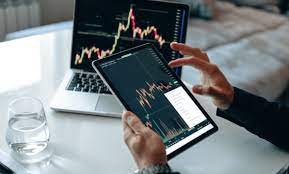In the world of online trading leverage is a powerful tool that can significantly amplify your potential returns. By allowing traders to control larger positions with a smaller amount of capital, leverage provides opportunities for higher profits. However, with great power comes great responsibility. While leverage offers the potential for substantial gains, it also introduces risks, making it essential for traders to understand how to use it effectively. This article explores how leverage works, its advantages, and key considerations for maximizing returns in online trading.
What is Leverage in Online Trading?
Leverage in online trading refers to the ability to control a larger trade size than the amount of capital you have in your account. It is essentially borrowing funds from your broker to open positions that exceed your actual account balance. The ratio of leverage is expressed as a ratio, such as 1:50, 1:100, or even higher. For example, with a leverage ratio of 1:100, you can control a position worth $100,000 with just $1,000 in your trading account.
Leverage allows traders to magnify their exposure to the market without needing to commit the full value of a trade upfront. This feature is widely used in various asset classes, such as forex, stocks, and commodities, to increase potential profits with relatively small investments.
Benefits of Leverage in Online Trading
Increased Profit Potential The primary advantage of using leverage is the ability to amplify profits. By controlling larger positions with a smaller investment, you can increase the potential return on each successful trade. For example, a 1% movement in the price of an asset could lead to a significant profit when leveraged, which would be much smaller without the use of borrowed capital. This makes leverage an attractive option for traders looking to maximize returns with limited capital.
Access to Larger Markets Leverage opens doors to markets and assets that may otherwise be out of reach due to capital constraints. Traders can gain exposure to larger positions without the need for substantial upfront investments. Whether trading forex, commodities, or other financial instruments, leverage allows you to enter markets that might have required much higher amounts of capital if trading without leverage.
Flexibility in Trading Strategies Leverage provides traders with greater flexibility to diversify their strategies and trade multiple assets simultaneously. With access to larger positions, you can spread your risk across different markets or asset classes, creating more opportunities for profit. Traders can adjust their positions according to their risk tolerance and market conditions, further enhancing their trading strategies.
Efficient Capital Allocation Leverage allows traders to utilize their capital more efficiently by opening multiple positions at once, instead of using all their funds for a single trade. This means that your available capital can work for you, potentially generating profits from different market opportunities. By using leverage, you can keep a portion of your capital reserved for other trades or investments, making your trading approach more dynamic.
Risks and Considerations
While leverage can magnify profits, it can also amplify losses if the market moves against you. This is why it is crucial for traders to use leverage cautiously. A small unfavorable movement in the market can result in a loss greater than your initial investment if you are highly leveraged. To manage this risk, traders should:
Use stop-loss orders to automatically exit trades if the market moves beyond a certain point.
Limit leverage to levels that align with their risk tolerance and trading experience.
Monitor positions closely to ensure timely intervention in volatile market conditions.
Risk management strategies, such as controlling trade sizes and using leverage conservatively, are essential to successful trading with leverage.
Conclusion
Leverage is a powerful tool in online trading that can maximize returns and enhance trading flexibility. By providing the ability to control larger positions with a smaller investment, leverage opens up new opportunities for traders to profit from different markets and asset classes. However, it is crucial to use leverage responsibly, as the potential for greater profits comes with increased risk. Successful traders use leverage carefully, combining it with solid risk management strategies to mitigate potential losses. With the right approach, leverage can be an effective way to enhance returns and build a successful online trading career.

